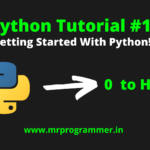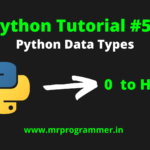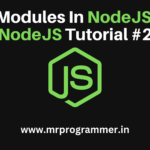Welcome back to The JS Developer’s Podcast, brought to you by MrProgrammer and written by Tanmay Sinha! Whether you’re a beginner or an experienced developer, this podcast is your guide to mastering JavaScript. Today, we’re diving into Episode 2: Variables and Data Manipulation—a fundamental topic that will build a strong foundation for your JavaScript journey.
Before we get into the technical details, I have a question for you. Have you ever wondered how some developers choose the right variable? It might feel like a gut feeling, but it’s really about grasping the key concepts of variables. It’s also about knowing how to handle data.
Also Read: The JS Developer’s Podcast [EP: 1] Introduction to JavaScript
JavaScript gives a lot of flexibility. This is great, but it can also confuse beginners.
I remember when I began coding in JavaScript. I used var for everything. It worked at first, but I soon faced bugs from var‘s quirks. Then I found let and const, which made my life much easier.
Today, we will look at how JavaScript has changed from using var to let and const. It is important to understand the differences between these keywords. But knowing what they do is not enough. You also need to learn how to declare, initialize, and manipulate data. This knowledge is key to building strong applications.
Declaring and Initializing Variables
Let’s begin with the basics. A variable is a container for data. Before you use it, you must declare it. In JavaScript, you do this with special keywords. These keywords tell the computer that you will store something.
In the past, we used var to declare variables. However, JavaScript has changed. Now, we have let and const. These are more commonly used in modern code
- var is globally scoped and has some quirks that can cause tricky bugs, so many people avoid it today.
- let is used when you think a variable will change over time. It’s block-scoped, so it’s only accessible within the block where it’s declared, making it safer.
- const is for variables that should not change. Once assigned, the value stays the same, which is good for values that need to remain constant.
After declaring a variable, you usually give it an initial value. This step prepares the variable so you can use it in your program.
Working with Data Types
JavaScript variables can store different kinds of data, like text (strings), numbers, lists (arrays), and more complex structures (objects).
- Strings store text inside quotes. You can combine them or add dynamic values, which helps in creating more complex outputs.
- Numbers let you do math operations like adding, subtracting, multiplying, or dividing.
- Arrays hold several values in one variable, making them great for lists of items.
- Objects organize data with key-value pairs, like a digital filing system. You can even nest objects inside others for more detailed information.
Data Manipulation Techniques
Now that we know how to declare variables and understand different data types, let’s talk about manipulating that data:
- String manipulation includes replacing text, splitting strings into smaller parts, or trimming unwanted spaces.
- Numbers can be rounded or converted into different formats, like turning a number into a string or vice versa.
- Arrays offer powerful methods for manipulating elements. You can double the values, filter items, or reduce the array to a single value.
- Objects can be cloned, merged, or accessed for specific data. Their flexibility makes them a core part of JavaScript development.
By now, you should have a solid understanding of declaring variables, working with different data types, and how to manipulate that data. These are key skills for writing effective and dynamic code.
In the next episode, we’ll explore functions and scope in JavaScript. It’s going to be exciting, so make sure you don’t miss it!
Thank you for tuning in to The JS Developer’s Podcast. If you’re enjoying the series, make sure to subscribe, and grab your copy of The Complete JavaScript Developer’s Handbook. Until next time, keep coding, keep learning, and keep pushing your limits with JavaScript!
- I Tried ChromeOS Flex After Switching From Windows 10 - October 13, 2025
- Top 5 Business Skills Every Programmer Needs to Get Hired (2025 Guide) - August 27, 2025
- Intel’s Downfall? How a Silicon Titan Lost the Plot—and What Comes Next - August 26, 2025







